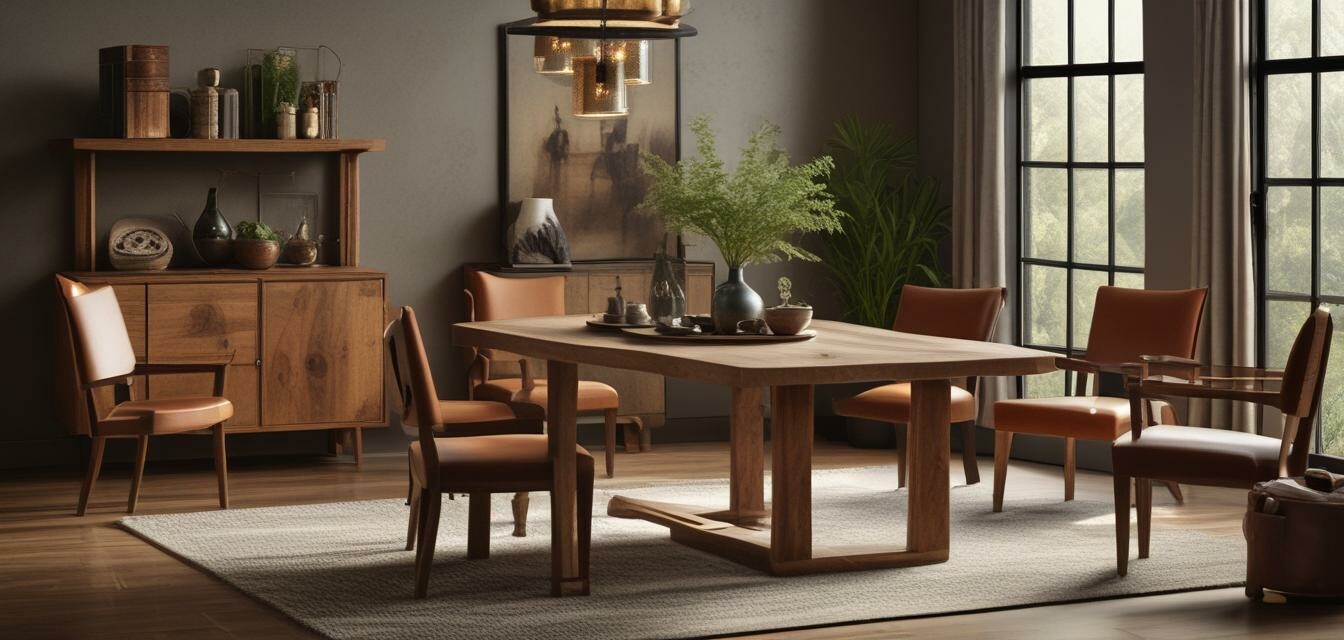
Latest Trends in Sustainable Wood Furniture Design
Key Takeaways
- Handcrafted designs are gaining popularity.
- Reclaimed wood is the top choice for eco-conscious consumers.
- Minimalist aesthetics and multifunctional furniture are trending.
- Innovative wood finishing techniques enhance sustainability.
- Integration of technology with natural designs is emerging.
Explore the emerging trends in sustainable wood furniture design that are making waves in the industry in 2024. As consumers become increasingly aware of environmental issues, the demand for eco-friendly products continues to rise. Wood furniture, known for its durability and timeless beauty, is transforming with innovative design approaches that honor nature while meeting the modern design aesthetics.
1. The Rise of Handcrafted Designs
In 2024, handcrafted wooden furniture designs are taking center stage. Artisans are focusing on creating unique pieces that reflect personal stories and craftsmanship. This trend highlights the value of skilled artistry and the charm of imperfections in natural wood.
- Emphasis on unique wood grains and textures
- Custom projects tailored to individual preferences
- Support for local artisans promoting traditional methods
2. Reclaimed Wood Takes the Lead
Reclaimed wood is increasingly popular due to its sustainable sourcing and distinctive character. This trend is driven by eco-conscious consumers who seek to minimize their environmental footprint. Furniture made from reclaimed materials not only provides a rustic charm but also tells a story.
Benefits of Reclaimed Wood
| Benefits | Description |
|---|---|
| Eco-friendly | Reduces the need for new lumber and minimizes waste. |
| Unique Character | Each piece has a one-of-a-kind look and history. |
| Durability | Often sourced from older, denser wood, making it more durable. |
3. Minimalism and Multifunctionality
Modern lifestyles are evolving, and so is furniture design. Minimalist aesthetics are favored, emphasizing clean lines and clutter-free spaces. Multifunctional furniture that saves space and offers various uses is on the rise.
- Transformable furniture, like tables that extend or fold
- Storage solutions integrated into stylish designs
- Lightweight and portable options for versatility
4. Innovative Wood Finishing Techniques
With advancements in technology, new finishing techniques are emerging that enhance the sustainability of wooden furniture. These methods ensure products are durable and maintain their aesthetic appeal while being environmentally friendly.
Popular Finishing Techniques
| Techniques | Eco-friendly benefits |
|---|---|
| Oil Finishes | Natural oils enhance wood grain and do not emit harmful VOCs. |
| Water-based Finishes | Reduce air pollution while offering a clean look. |
| Low-VOC Products | Minimize harmful compounds, making them safer for indoor use. |
5. The Integration of Technology
As technology progresses, the integration of smart features into wooden furniture is becoming more prevalent. This includes Bluetooth speakers hidden in coffee tables or USB charging ports embedded in nightstands. The combination of traditional craftsmanship with modern functionalities creates exciting possibilities.
Examples of Tech-Integrated Designs
- Smart tables with built-in technology
- Charging stations incorporated into existing furniture
- LED lighting integrated into shelving units
Conclusion
As we move further into 2024, the trends in sustainable wood furniture design reflect a deep connection to nature, heritage craftsmanship, and modern innovation. Consumers are looking not only for style but also to contribute to a healthier planet. By embracing these trends, brands can capture the attention of a growing audience seeking functional and beautiful solutions that honor the environment.
Pros
- Supports sustainability and eco-friendliness.
- Unique design tailored to personal preferences.
- Durability and longevity of quality wood pieces.
Cons
- Handcrafted pieces can come at a higher price.
- Availability of reclaimed or unique woods may vary.
- Maintenance may require specific care techniques.
To further explore the world of natural wood, check out our wood finishing products or browse our selection of custom wooden projects. Discover how to incorporate these trends into your home decor by visiting our Home Décor Accents section. If you're looking for kitchen essentials, our kitchenware page has great natural wood options. Lastly, don't miss out on our insights regarding buying guides for informed purchasing decisions.